
The Hagstrom Swede Bass was in production between 1971 and 1976, and this example was part of the third batch of Swede basses produced in Älvdalen, Sweden, in 1973. Initially translucent Cherry (polyester) was the only finish available (as seen here), later joined by Black and Natural.
This is a great bass - first thing you notice is how solid it is, a really chunky mahogany body with arched top - 5cm thick at the edges, 6cm in the middle, and with a beautifully contoured back. But the next thing is the feel of the neck. It's narrow but deep, and quite a contrast to the flat necked Hagstrom basses of the 1960s - neck width at the nut is just 39mm, increasing to 50mm at the 12th fret.
But then there is the tone switch - no longer on/off slide switches that Hagstrom employed throughout the 1960s, now more akin to the tone switches fitted to Gretsch guitars. Down is a bass cut, mid is neutral (no cut), up is a treble cut - or as Ampeg described it in 1974 - sharp, mellow and deep.
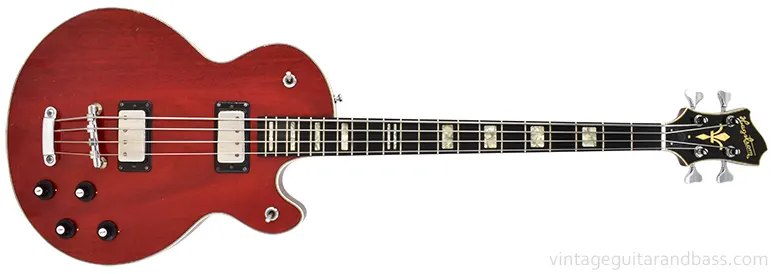
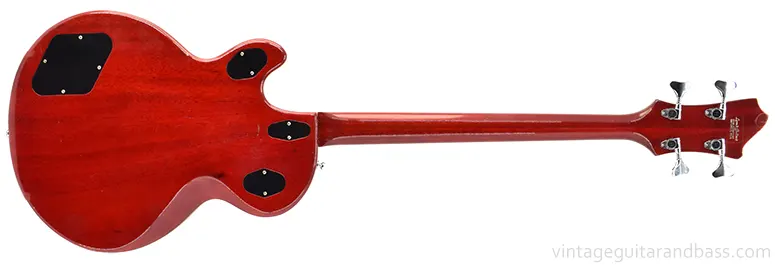
Like the Gibson Les Paul Triumph bass, the Hagstrom Swede was short scale at 30 3/4", with a mahogany body and neck - though with a bolt-on neck and ebony fretboard; the Gibson had a set neck and rosewood fretboard. The Swede has quite a deep body (5cm at edges) with a beautiful arched top (up to 6cm at its thickest) and contoured back. This really is a nicely built bass.
But it is also beautifully appointed with a bound body and headstock, inlaid headstock logo, fleur-de-lis emblem and block position markers (with double block at the 12th fret). Early publicity material describes the inlays as mother-of-pearl; later publicity describes them as pearloid. It is currently unclear which inlays, and within which batches were mother-of-pearl and which were pearloid. If you know a (non-invasive) method for accurately determining the difference between these two materials please comment.
The bolt-on 'ultra-fast' neck is quite interesting. There are just two bolts (most other guitars have three or more often four), and these are (again somewhat unusually) concealed in a recessed cavity, covered by a separate plastic cover. This is discussed in detail in the supporting members area.
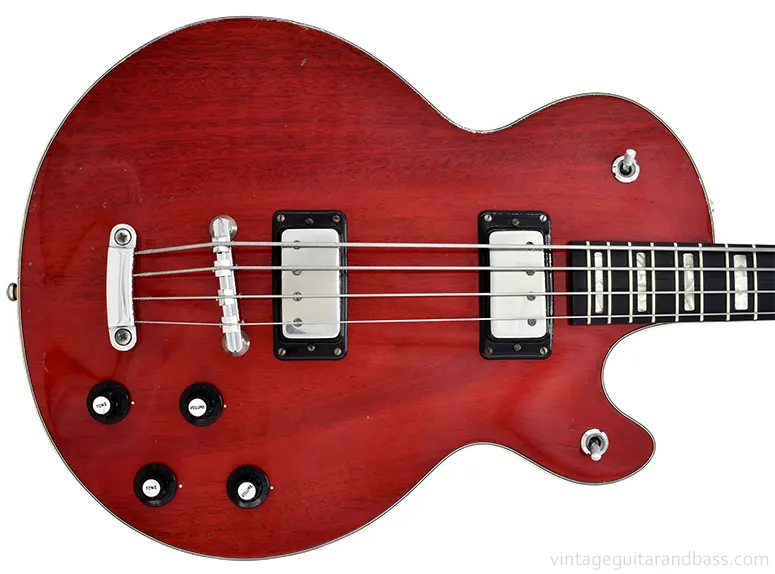
Hagstrom Swede bass controls are fairly straightforward: a volume and tone control for each pickup, a three-way pickup selector switch on the lower bout (bridge pickup / both pickups / neck pickup), and a three-way tone selector (sharp / mellow / deep) on the top bout. Interestingly, this one is wired so that the pickup switch and pots are in reverse of the usual Gibson - i.e. up is bridge, down is neck.
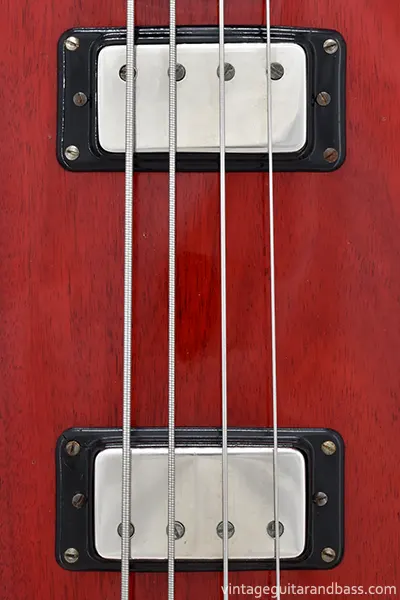
The Swede bass is fitted with two identically sized humbuckers with chrome-plated covers, though the bridge pickup has a taller surround than the neck.
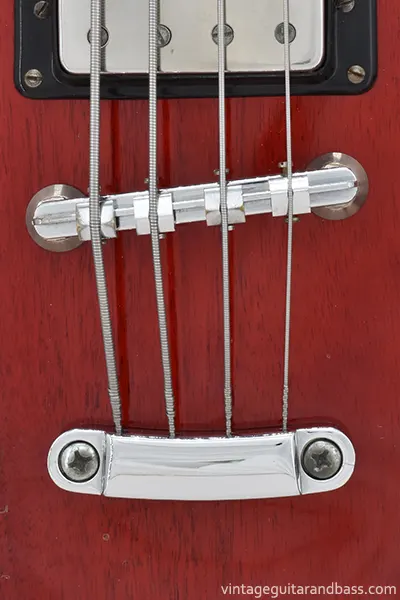
The Swede bass was fitted with an adjustable bridge and stop tailpiece - a noticeable improvement on the combined bridge/tailpiece designs equipped to previous Hagstrom basses.
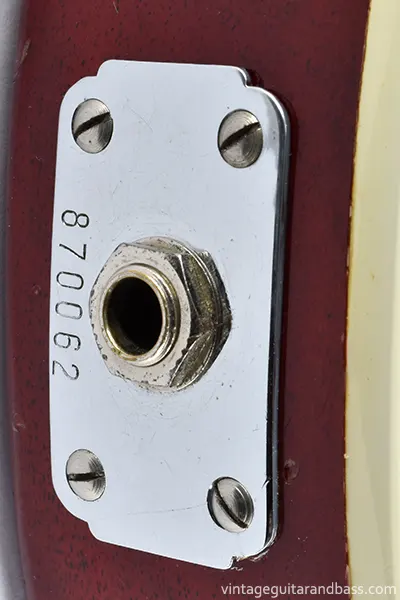
1973 Hagstrom Swede Bass output jack with serial number 870062. 870 is the batch number, whilst 062 is the instrument number in that batch. This was actually the smallest batch of Swedes with just 100 instruments.

1973 Hagstrom Swede Bass control knobs: a volume and tone control for each pickup.
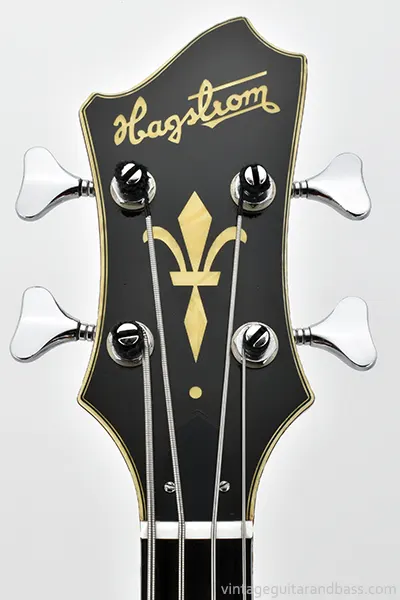
1973 Hagstrom Swede Bass headstock front, with inlaid Hagstrom logo and fleur-de-lis motif. The front has three-ply white/black/white binding.

1973 Hagstrom Swede Bass headstock reverse, with Hagstrom-branded Schaller M4 tuning keys. The decal on the reverse was applied by the original vendor, Lynn's Guitars in Knoxville, Tennessee.
£777
€750